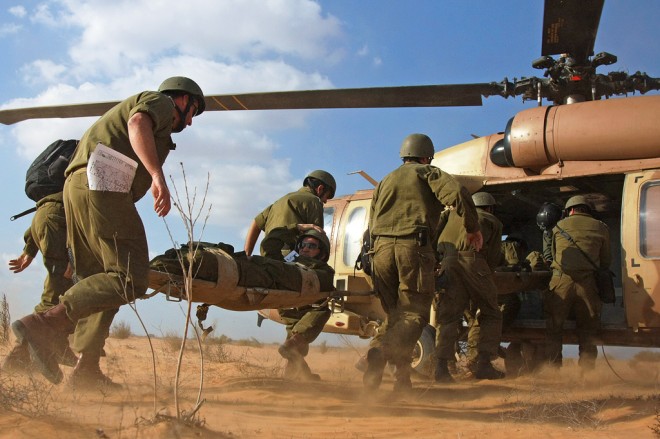
Nano Drones, Ethical Algorithms: Inside Israelís Secret Plan for Its Future Air Force
From Truther
Nano drones that an infantryman can pull out of his pocket; helicopters piloted by robots who extract wounded soldiers from the battlefield; micro satellites on demand; large spy balloons in the upper reaches of the stratosphere; virtual training with a helmet from your office; algorithms that resolve pilots’ ethical dilemmas (so they won’t have to deal with those pesky war crimes tribunals); and farming out code to a network of high school kids.

Since mid-2009, some 300 Israel Air Force officers have been brainstorming about the next steps for one of the world’s most advanced air forces, and the main pillar of Israel’s strategic power. This “IAF 2030″ project has just come to an end. Besides a standard press release issued by the military, little has been disclosed about it. Exclusive details are reported here for the first time.
The task of preparing the project was given to Major Nimrod Segev, head of the IAF’s long-term planning department. Segev divided his 300 officers into nine teams: Advanced Information Technology, Vast Data, Space, Cyber, Environment, Intelligence, Human Factor, Organizational Behavior, and a ‘Red Team,’ to challenge the other eight’s assumptions.
The participants were asked to think ahead — far ahead — something that doesn’t come easy in the military culture here, where long-term planning is almost unheard of. What changes would it have to make in weapons systems, platforms, technology, manpower, and organizational behavior to meet potential new threats? What new planes, guidance systems, and technology would they want? Let loose, the officers were told. Don’t worry about the how and the how much; just let your imaginations go. The air force even brought in Israel’s number one dreamer — President Shimon Peres — to fire their imaginations with a pep talk.
The vast majority of the “IAF 2030″ document is classified. The interview with Segev at the IAF’s headquarters in Tel Aviv — nicknamed the “Canary” — was conducted with a security officer present. No questions about the Red Team were answered.
Segev did open about one of the more controversial ideas that came up, however: the notion of “mathematical formulas that solve even the difficult ethical dilemmas in place of human pilots.” The air force has been developing technologies for quite some time now that can divert missiles in midair if all of a sudden a civilian pops up near the target, but often this kind of thing happens too quickly even for the most skilled operators. It’s part of an uneven, decade-long IAF effort to try to bring down collateral damage — a necessity, since the air force fights asymmetric enemies in densely populated areas. But this is something the IAF is keen to develop even more.
The concept of a computer taking over almost all the functions of this kind of thing is very tricky, though; you can’t very well say at a war crimes tribunal that you’re not responsible for unintended deaths, or tell the judge it was all the algorithm’s fault.
Some machines may vanish, too. In the meantime, some machines may vanish. Many in the IAF 2030 group thought that the future didn’t lie in large, expensive simulators at air force bases, but rather portable simulators you can use almost anywhere. “Virtual training from your office. Strap on a helmet and you’re in the air,” Segev said.
While the last aerial dogfight between Israeli and Arab warplanes took place somewhere in the early ’80s, Segev said that aerial combat was now, and would continue to be, a staple of IAF pilot training. “While we didn’t get to the point of making the human pilot obsolete, we do see that the job of a pilot is vastly different from what it was. These days the air-to-air missile is the ‘dogfight’ – the missile can be launched from a vast distance at an enemy plane. The point is to see the enemy way before he sees you, and for that you need datafighters, not dogfighters,” Segev says.
Segev also told Danger Room that the Space and Intelligence teams found the 100,000 feet layer of the stratosphere “very interesting.” These days, the best warplanes can only fly to somewhere around 50,000 feet, and the best satellites in low orbit can get down to 500,000 feet. That leaves a whole ‘middle layer’ where “you can get really creative,” he adds.
Another off-the-wall idea: farming out complex coding and other technical tasks to a network of six technical high schools run by the IAF across the country. These technical schools already exist. But by 2030 — when today’s infants will be enrolled — these teenagers could be at the core of a revamped Israel Air Force.

